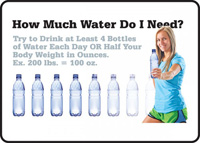| The Home page of ILPI's Safety Data Sheet (SDS) Resource, the leader in SDS information since 1995! | |
| The history and philosophy behind this resource. | |
| A curated collection of books and reference materials concerning Safety Data Sheets and closely related topics. | |
| Paste your plain text SDS into the SDS-Demystifier, and it will be converted into a hypertext-enriched document with links to detailed explanations of each key term. | |
| An extensive list of frequently asked questions about Safety Data Sheets including regulations, content, compliance, and more. | |
| A humorous take on Safety Data Sheet jargon. Fill in the blanks on our entry form to generate a personalized Unsafety Data Sheet to share with your coworkers. | |
| Since 1995, we've maintained this massive curated list of the best places to find Safety Data Sheets on the Internet. | |
| You are here! Way more than a glossary, this hypertext-enhanced resource covers hundreds of SDS-related terms and expert knowledge. Each entry includes both the SDS relevance and links to additional authoritative resources. | |
| Archived results of Safety Data Sheet related polls taken by some of our millions of site visitors | |
| The OSHA regulations behind SDS regulations, including the inspection guidelines and over 400 official interpretations letters under the Hazard Communication Standard | |
| Commercial suppliers of SDS authoring and management software as well as cloud compliance services. | |
| Commercial companies that will create SDS's for your specific needs as well as SDS translation companies. |

Safety signs, banners, and scoreboards? Get yours at Safety Emporium!
WHC - Water Hazard Class
Definition
The German Federal Water Management Act requires that substances be evaluated for negative influence on the physical, chemical or biological characteristics of water. These are classified into numeric water hazard classes (WGK or WHC depending whether you use the English or German acronym).
Additional Info
The water hazard potential is based on the properties of the substances (in particular acute oral toxicity for mammals), toxicity for aquatic organisms (mostly fish and bacteria) as well as biodegradability and bioaccumulation. The ranking is assigned by the Commission of the Evaluation of Water Hazardous Substances (KBwS) in which the German federal government, the German States and industry are represented.
| Class | Hazard Potential |
|---|---|
| nwg "nicht wassergefährdend" | Not hazardous (formerly WGK 0) |
| 1 | Slightly hazardous to water |
| 2 | Hazardous to water |
| 3 | Extremely hazardous to water |
Any substance that falls in Classes 1, 2, or 3 is referred to as awg (hazardous to water in general).
Classification of substances into Water Hazard Classes is discussed in the resources listed under Further Reading below. A working knowledge of German will be a big help.
SDS Relevance
The WGK abbreviation commonly appears on Safety Data Sheets for products that are sold in the European Community (EC). If present, this information is generally found in Section 15 (regulatory information), however it may also appear in Section 12 (ecological information).
In the United States, the data required for SDS Sections 12 through 15 falls outside OSHA's purview, so these sections are non-mandatory (optional). OSHA requires only that these headings appear on the sheet but does not require that any information be entered under sections 12 through 15.
Further Reading

Help your workers beat dehydration with heat stress prevention signs from Safety Emporium.
- The German government's Federal Environmental Agency (Umweltbundesamt) (English version).
- German water protection regulations and statutes.
- Catalogue of Substances Hazardous to Water - the index page of the WGK.
- Rigoletto Database of Substances Hazardous To Water including download and search links in the top level navigation menu.
- Aquatic Acute Toxicity Tests Database at the U.S. Geological Survey.
- How to Calculate German Water Hazard Class (WGK) for Substances and Mixtures at ChemSafetyPro with a detailed scoring system related to hazard statements.
See also: acute toxicity, ANSI, biolgical oxygen demand, CHIP, heavy metal.